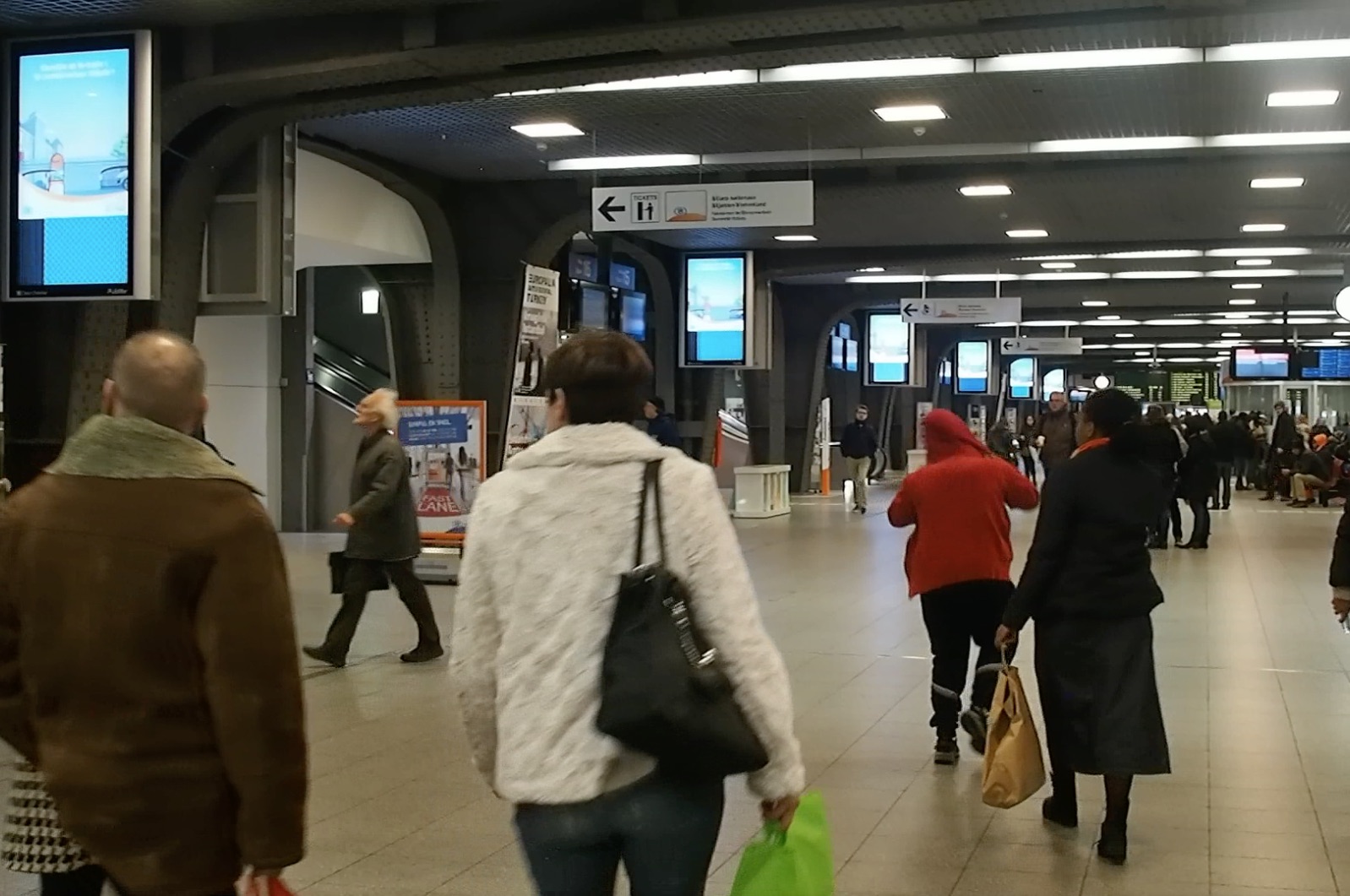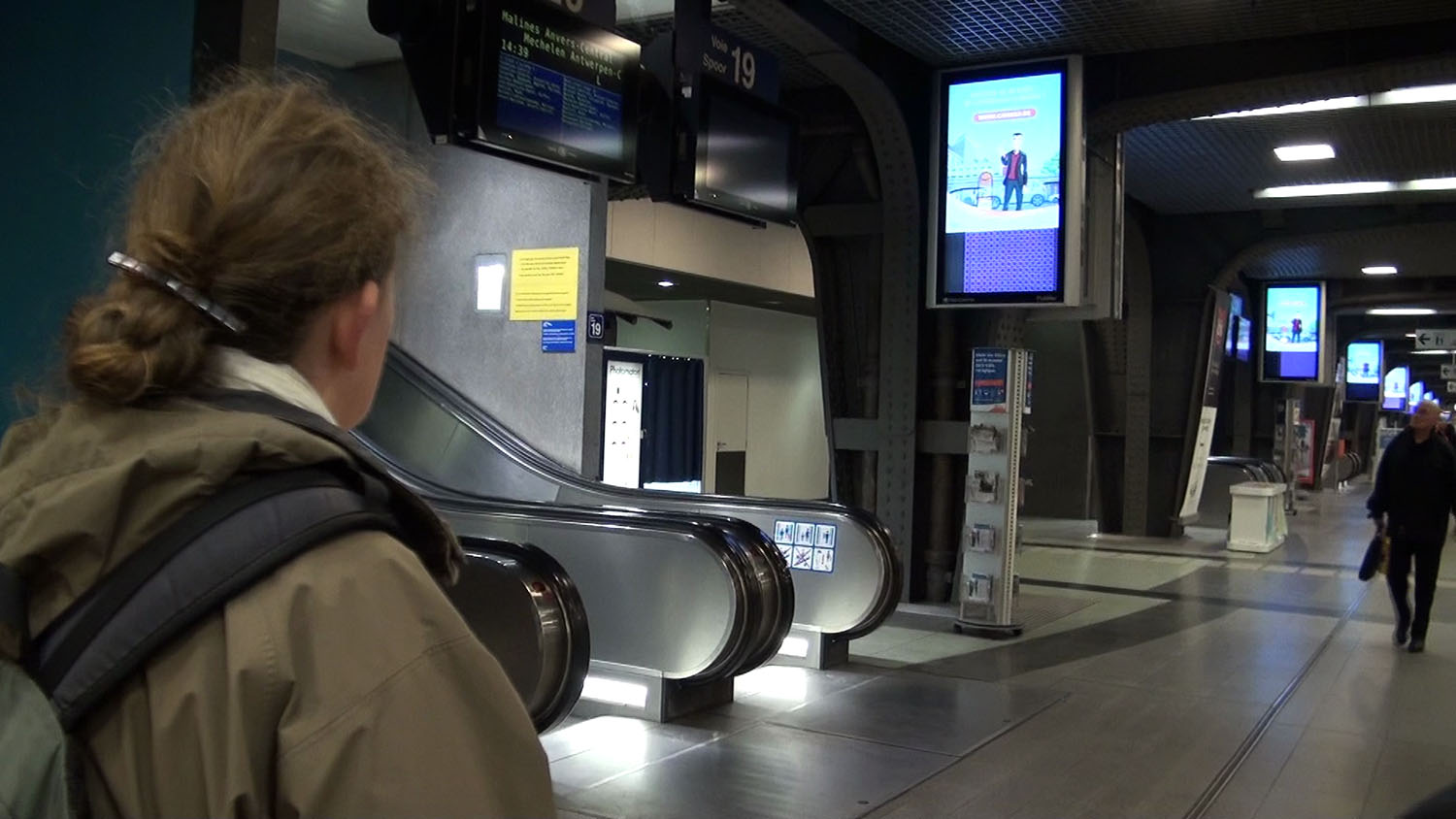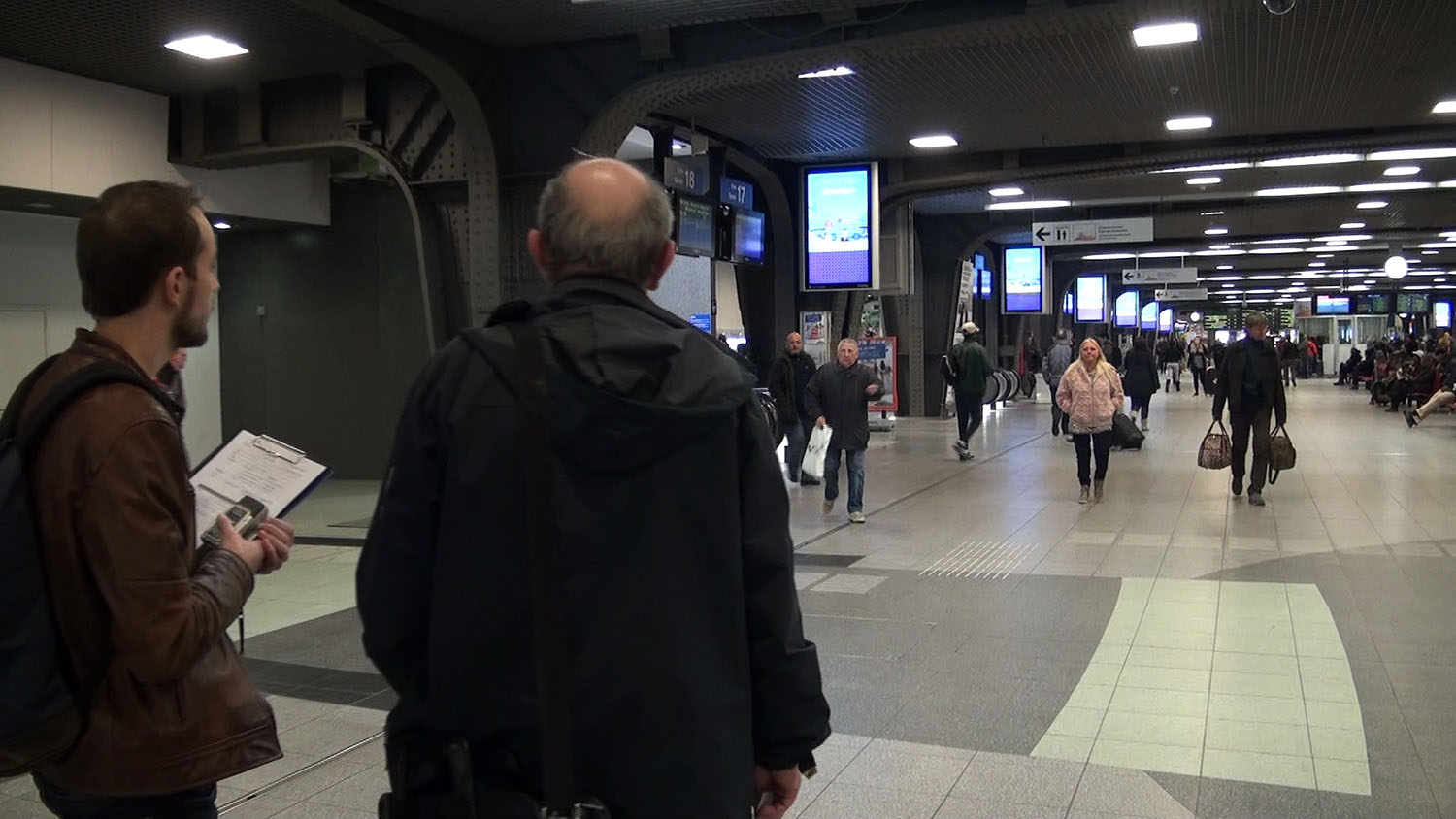Wayfinding via Consecutive and Synchronized Public Displays
How can a sequence of many public displays direct people in multiple directions?
Our built environment is becoming increasingly equipped with public displays, many of which are networked and share the same physical location. In spite of their ubiquitous manifestations and inherent dynamic functionalities, the presence of multiple public displays is often not exploited, such as to solve dynamic wayfinding challenges in crowded or complex spaces. Hence, we have studied how signage can be animated onto multiple consecutively located public displays in combination with other content.
In particular, we tested the scenario of synchronising multiple public displays in time and space to provide a unique form of wayfinding information to passers-by. For this experiment, we used the physical context of a large, busy train station environment in Brussels, capital of Belgium.
Our results indicate that animated patterns can be used to convey directions under specific spatial conditions and content combination strategies, yet their impact is limited and highly dependent on the visibility of the animated patterns on individual screens and across multiple displays.
Publication
- Coenen, J., Wouters, N., Vande Moere, A. (2016). Synchronized Wayfinding on Multiple Consecutively Situated Public Displays. International Symposium on Pervasive Displays. PerDis'16. Oulu, Finland, 20-26 Juni 2016 (pp. 182-196) ACM.
- https://doi.org/10.1145/2914920.2929906



